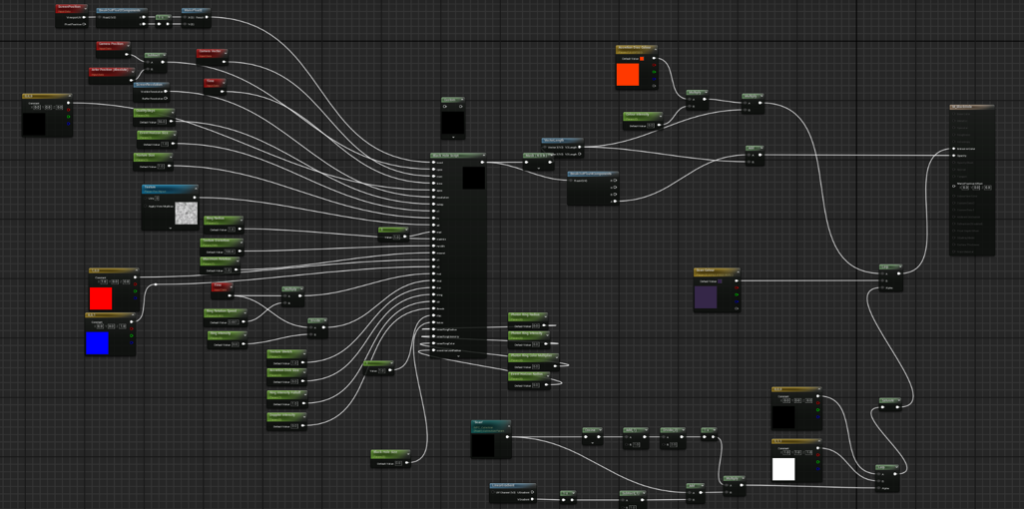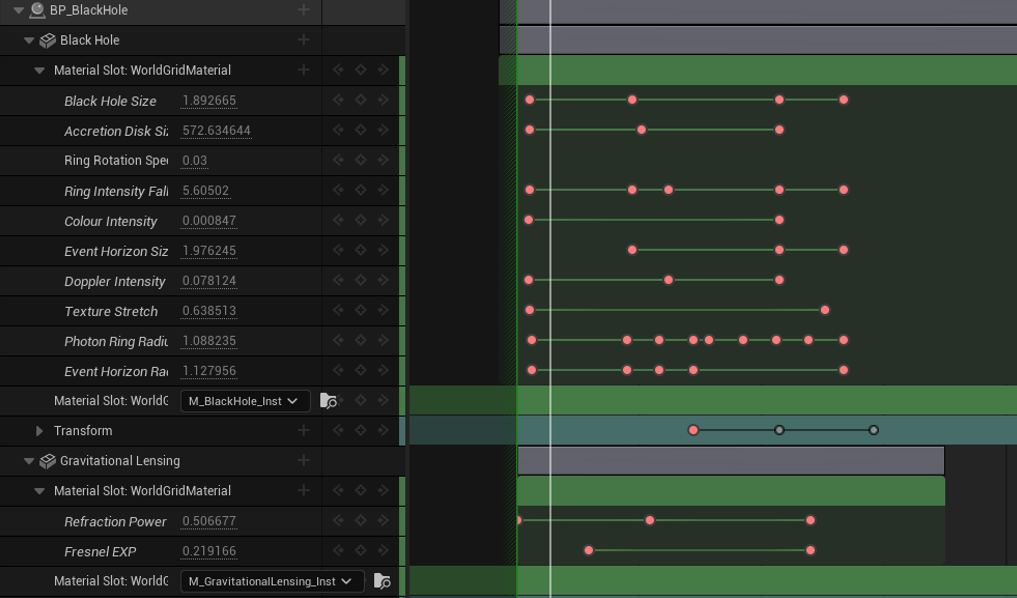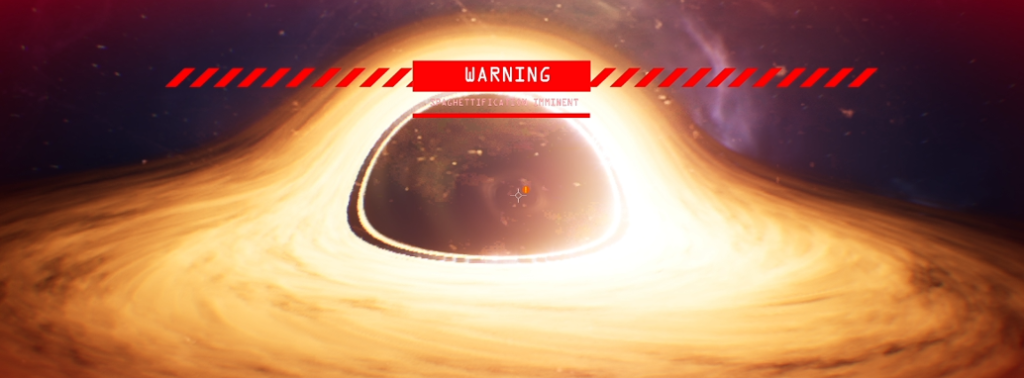Black Hole
-
Mathematically Accurate
Uses a mathematically driven approach to accurately visualise a black hole.
-
Gravitational Lensing
Lensing created around the black hole using a Lensing Material through Refraction.
-
Creative Ending
The Sequencer concludes the experience with a dramatic finale: the player being pulled into a black hole, enhanced by multiple layered effects to heighten the impact and sense of finality.
This final phase focused on representing the formation and interaction with a black hole. Unlike previous stages, which relied on shader-based VFX and particle systems, this section used a mathematically driven approach, adapted from a custom HLSL- based tutorial (Arghanion’s Puzzlebox, 2023). This shader-based black hole material simulates the behaviour of photons as they become influenced under extreme gravity around a black hole, rendering a physically accurate accretion disk around the black hole singularity.
Black Hole Shader
This shader uses a custom HLSL function node with a range of exposed variables, giving full creative control over the black hole’s appearance and transition.
The adapted code casts rays from each screen pixel, simulating photon paths through curved spacetime using the Schwarzschild metric. Rays bend under gravity, and if they intersect the accretion disk at z = 0, the pixel is shaded based on customizable texture and lighting settings. If not, the pixel remains unlit.
Doppler shifts are applied based on disk rotation, affecting color and intensity. If a ray’s value exceeds a set threshold (u > 1), it falls into the black hole and the pixel turns black. Rays that nearly fall in may orbit multiple times, forming the bright photon ring and enhancing the gravitational lensing effect.


Sequencer Control
Adjustable parameters for both the Black Hole and Gravitational Lensing Material were exposed in sequencer to create a smooth transition from black hole seed to a fully formed black hole.
These variables were meticulously adjusted through iterative testing until an engaging sequence was built.
Ending Scene
To conclude the star’s lifecycle in a compelling way, this phase takes narrative inspiration from the time loop mechanic featured in Outer Wilds. When the black hole reaches a critical size, screen shakes intensify, the vignette color shifts from blue to red, and a warning UI appears: “Spaghettification Imminent” — a scientifically accurate term referencing the extreme tidal forces near a black hole.
This moment triggers a carefully timed sequence of post-process effects, including enhancements to an existing post-process material. A fisheye lens distortion simulates gravitational warping, while the vignette dynamically changes color to heighten the sense of tension and collapse.
As the player is pulled into the black hole’s center, the Sequencer initiates a portal-style transition, smoothly fading the screen to black. At a specific timestamp, the game restarts from the beginning of the simulation, placing the player back at the nebula.
This seamless loop reflects the cyclical nature of stellar evolution, giving players the opportunity to re-experience the game in new and meaningful ways.

